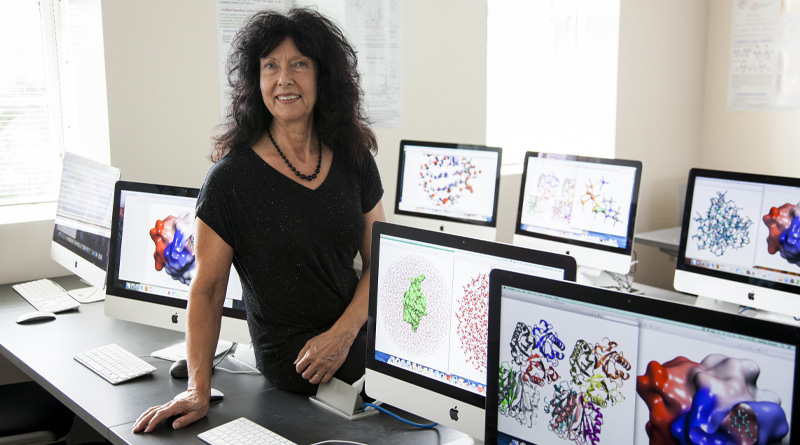SMU Team Collaborates to Speed Drug Discovery
Developing a new drug is a massive undertaking that can take 15 years and cost more than $2.5 billion dollars.
But a team of researchers from SMU has found a way to shorten parts of the process. They’ve developed a tool called SmartCADD, short for Computer Assisted Drug Design platform, to narrow down the chemical compounds that might be used to develop new drugs.
SmartCADD can identify drug design candidates from a billion possible compounds in days with good computational resources, said professor Elfi Kraka, who heads SMU’s Computational and Theoretical Chemistry Group.
The tool uses artificial intelligence to screen chemical compounds and identify the most promising. But, unlike typical AI, it’s not a black box.
“One important new feature in what we use is so called explainable AI,” Kraka said. “So, you also get an explanation of why the AI system did what it did.”
SmartCADD uses those explanations to whittle down the number of potential candidates even further by combining filters with quantum chemical evaluations and models that help align a chemical compound’s features to where they might fit on a protein.
“You can think of it like when people are panning for gold and putting the dirt through finer and finer grain things, until they get to the end, and they get the dust,” explained Corey Clark, assistant professor of computer science in the Lyle School of Engineering and deputy director of Research at SMU Guildhall.
SmartCADD’s result pinpoints the best drug candidates to bind to target proteins. A better fit means a more effective drug. SmartCADD cuts out potential drugs that won’t travel effectively through the body, or that will be toxic to patients.
The researchers recently tested SmartCADD on HIV. The tool created and searched through a database of 800 million chemical compounds and found that 10 million might work as HIV drugs. Then, it used its filters to both identify already approved drugs, and to suggest some new candidates that might work even better.
Now, the SMU team is working to apply the tool to an aggressive and fast-growing type of lung cancer. The drugs on the market have too many severe side effects, Kraka explained.
The team has also created a library with highly accurate chemical information for almost 165,000 molecules, which covers nearly 90% of druggable space.
Kraka said she hopes that researchers who don’t have access to computational resources will use the team’s library and SmartCADD to assist with their own projects. The next version of SmartCADD will include the library and corresponding AI that will help speed up the tool’s filtering system without the need for expensive calculations.
“The end goal is that these filters end up becoming useful,” Clark said, “and can dramatically reduce the time to find treatments and cures for disease.”









